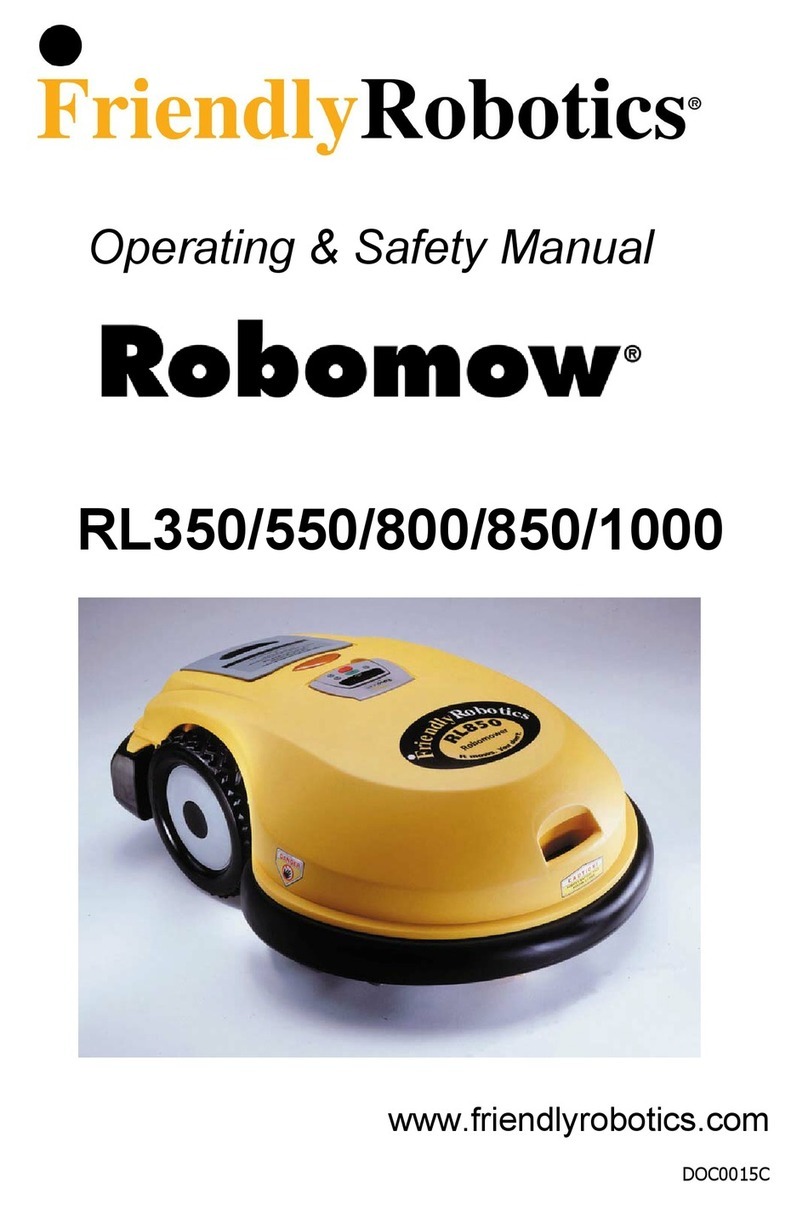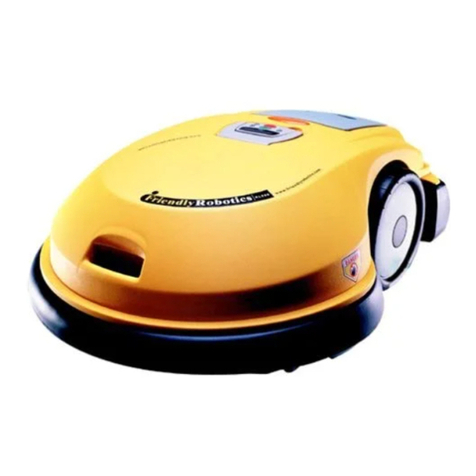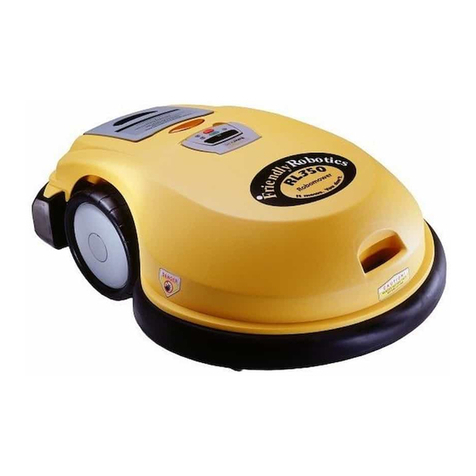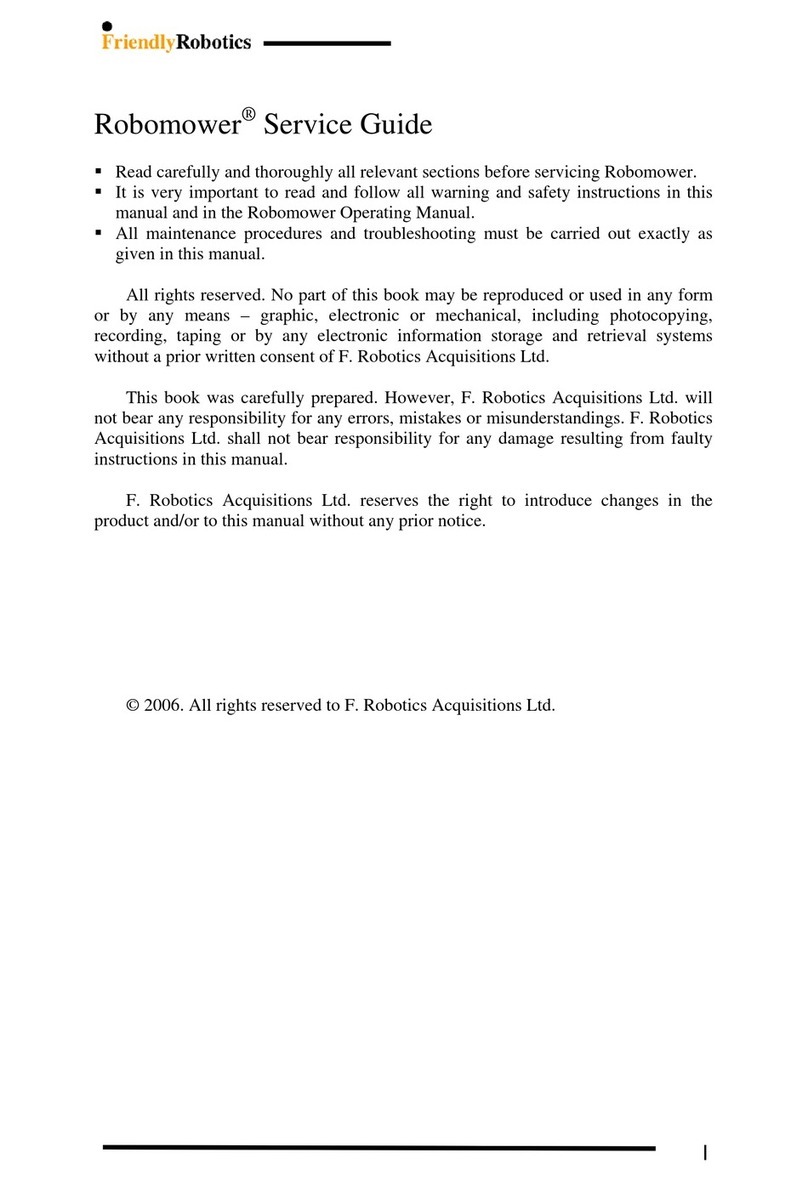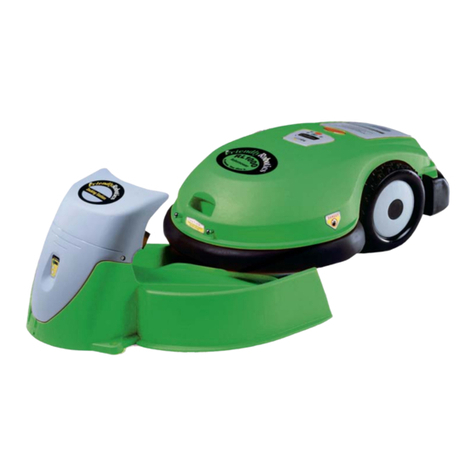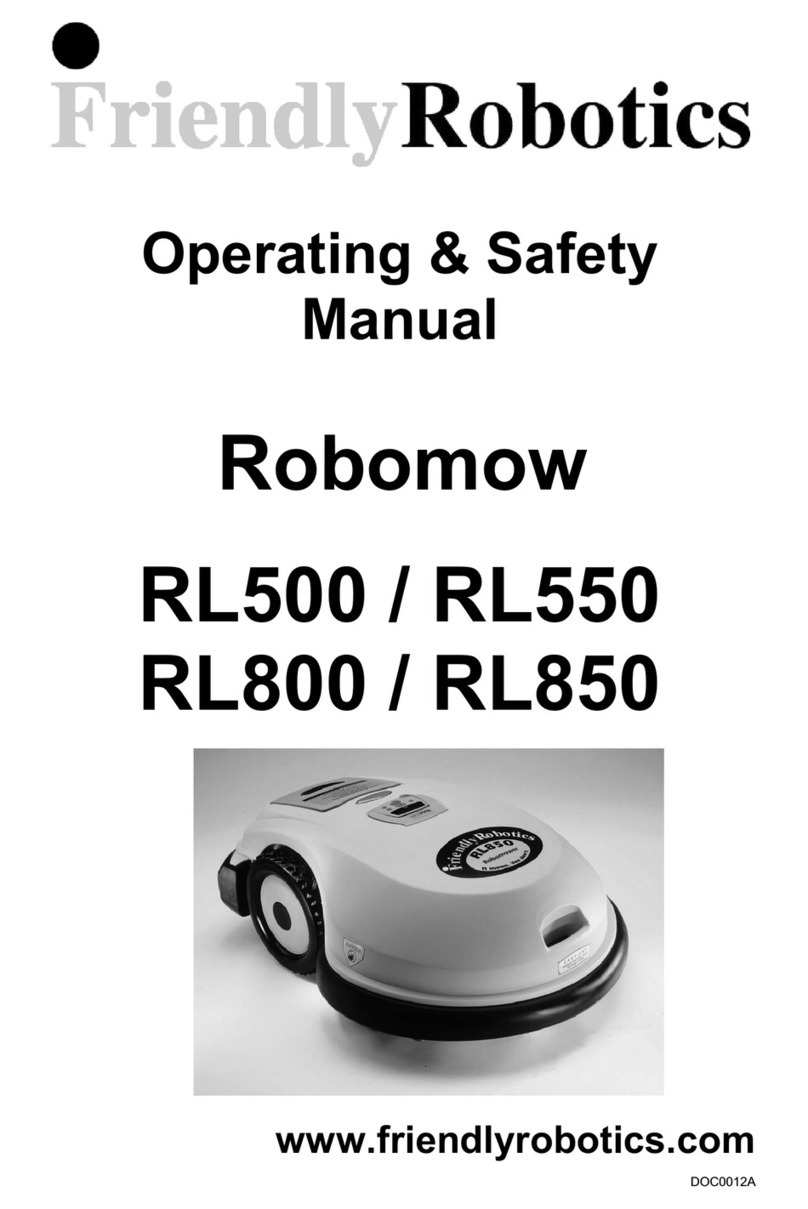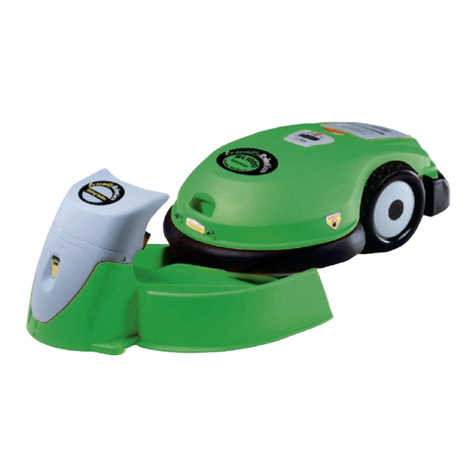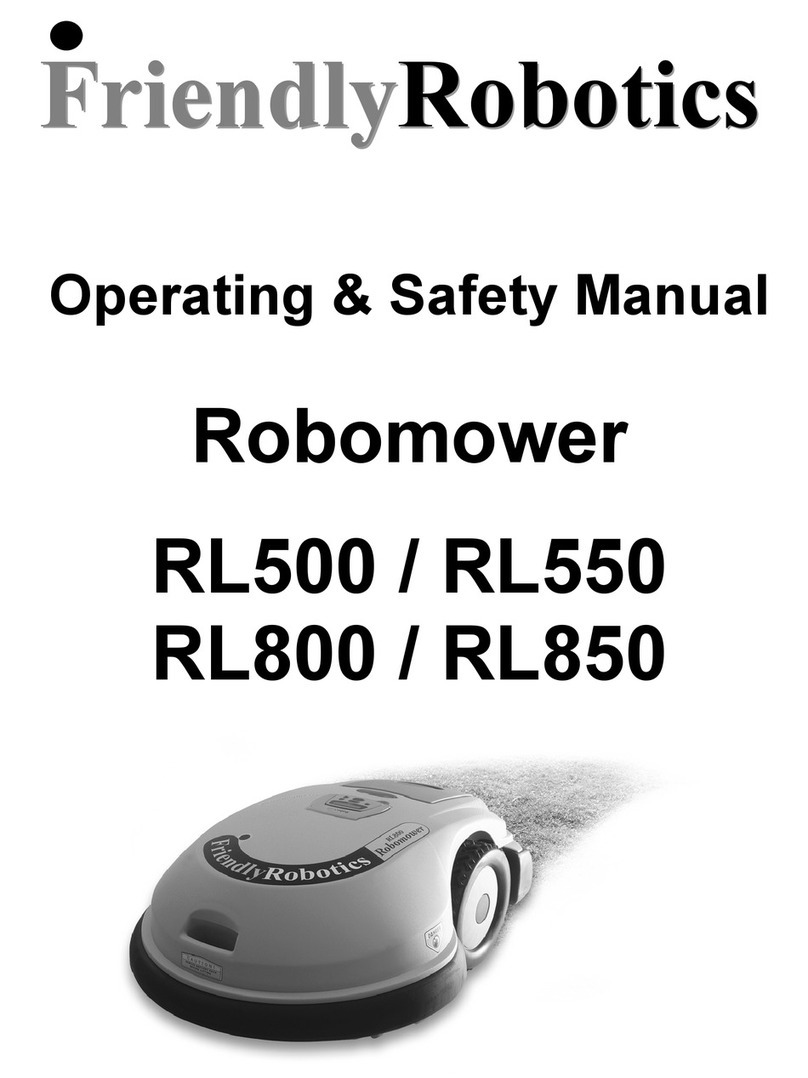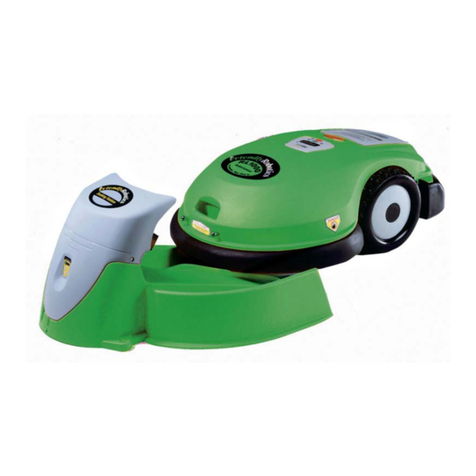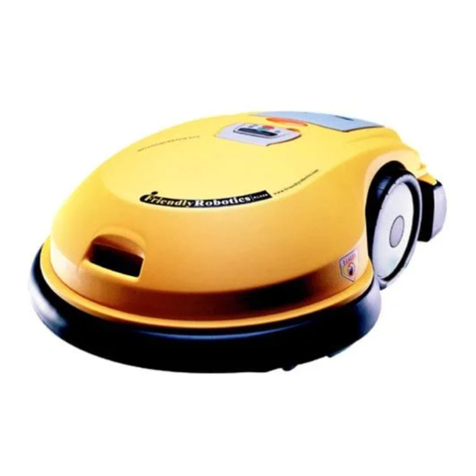
7
RoboMower®- Safety Features
1. Child Guard / Safety Guard
This menu option offers a safety feature to help prevent children or others not familiar with the safe
operation of the mower to operate it freely.
2. Lift Sensor
There is a sensor located on the front caster wheel of the mower. In the event the front of the
mower is raised approximately 1-inch from its resting position on the ground during blade
operation, the blades will stop rotating immediately (< 1 second).
3. Sensor Equipped Bumpers
The front and rear bumpers are equipped with contacts that will activate when the mower strikes a
solid, fixed object when that object is at least 6-inches in vertical height from the supporting
surface of the mower. When the bumper sensor is activated, the mower will stop movement in that
direction and reverse itself away from the obstacle. In manual blade operation, bumper activation
will stop the rotation of the blades immediately (<1 second).
4. Emergency Stop Switch
Located on the top outer surface of the manual controller, red in color. Pressing this button at any
time during operation will stop all mower movement and stop the rotation of the blades
immediately (<1 second).
5. Automatic Mode Recognition
The RoboMower is designed so that it cannot be operated in the manual mode while the Manual
Controller is in its pocket and it cannot operate in the automatic mode while the Manual Controller
is removed.
6. Two-Step Operator Presence Control
While in manual mode, it requires two independent finger actions in order to engage the mower
blades. Once engaged, the mower blade button must remain depressed to continue blade
operation. Once released, the two-step engagement process must be repeated.
7. Electronically Controlled Charging System
The RoboMower is equipped with an on-board charge control system. This allows you to keep the
charger connected at all times, even after the battery is fully charged. The control system will
prevent an overcharge to the battery and keep it fully charged and maintained for the next use.
8. Sealed Power Pack
The power pack that operates the RoboMower is completely sealed and will not leak any type of
fluids, regardless of position. In addition, the power pack contains a one-time-use fuse in the
event of a short-circuit or power malfunction.
9. Perimeter Switch and Perimeter Wire
The RoboMower cannot operate without a perimeter wire installed and activated through the
Perimeter Switch. In the event the Perimeter Switch is turned off or otherwise fails to function, the
RoboMower will stop operating. Likewise, should a break in the perimeter wire occur the
RoboMower would again stop operation. A break in the perimeter wire prior to operation will
prevent the RoboMower from operating. The RoboMower can only operate within the boundary of
the perimeter wire.
10. Auto-Off Perimeter Switch
The auto-off feature of the perimeter switch shuts down the perimeter switch operation after
approximately 5 hours of continuous operation. This is typically 1 to 2 hours after which a fully
charged Power Pack will need to be re-charged. This helps to prevent unauthorized persons from
attempting to re-start the RoboMower after it has completed its operation.
